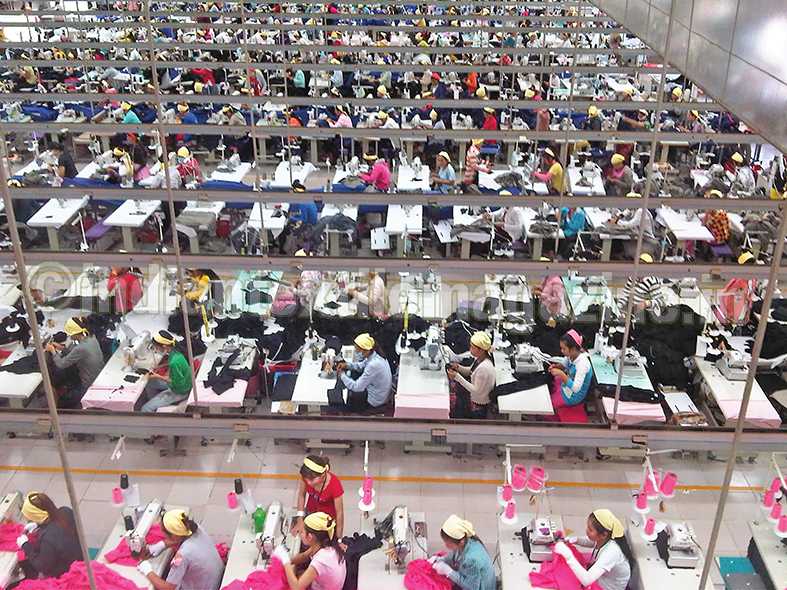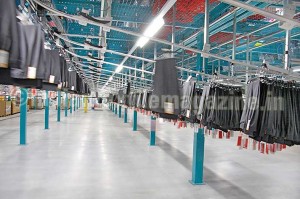India is the sixth largest supplier of readymade garments in the world with a 3.7 per cent share in global exports, as per the World Trade Integrated Solutions database of 2013. Bangladesh and Cambodia are the second and the 14th largest readymade garment suppliers respectively in the global market.
The multi-brand retail trade (MBRT) policy stipulates that at least 30 per cent of the of the value of procurement of manufactured/processed products purchased shall be sourced from Indian micro, small and medium industries, which have a total investment in plant & machinery not exceeding $2 million. The Government has approved a proposal from Tesco Overseas Investment Ltd. (TESCO), a UK company, to carry out the business of MBRT in India. No other application/proposal for investment in this sector has been received by the Department of Industrial Policy & Promotion.
Overseas competition
The Indian textile industry is facing stiff overseas competition, including from the neighbouring countries, especially Bangladesh, Pakistan and Sri Lanka, as these countries are taking advantage of the unilateral tariff preference scheme granted to developing countries. India, which was also a beneficiary of the EU GSP has been graduated out of the GSP from January 1, 2014, for textiles and some other products. The graduation out of countries is done by the EU based on the criterion of trade share. Hence Indian exporters of textiles pay the normal customs duty of upto eight per cent on textile products being sent to the EU from January 1, 2014, onwards.
Sri Lanka is covered under a preference scheme of the EU, namely, GSP. Bangladesh and Pakistan are covered under the other unilateral preference schemes of the EU, namely, the “Everything but Arms (EBA)” and the “GSP Plus” respectively. Hence, they have zero duty access for textiles products into the EU.
China’s manufacturing base in textiles is larger than that of India both in terms of yarn and fabric providing opportunities for higher garment manufacturing and exports. It has also large and strong infrastructure to meet global demand for textiles and clothing.
The Indian Government has undertaken research and studies on the various facets of the textile industry, including estimating the domestic household market size of textiles, export competitiveness of Indian textiles in different destinations, etc. The following are details of the various measures taken to improve textile exports and competitiveness of the Indian textile industry and to explore new export markets:
i) The Government has implemented several export promotion measures, including incentives under the Focus Market Scheme and the Focus Product Scheme, and enhancing the coverage of Market Linked Focus Product Scheme for textile products to increase India’s share in various countries. The Focus Market Scheme (FMS) offsets high freight cost and other externalities to select international markets with a view to enhancing India’s export competitiveness in these markets.
Further, to incentivise export of such products which have high export intensity/employment potential, so as to offset infrastructure inefficiencies and other associated costs involved in marketing of these products, the Government implements the Focus Product Scheme.
ii) Financial assistance is being provided for export promotion activities on focus countries and focus product countries under the Market Access Initiative (MAI) Scheme.
iii) Financial assistance is provided under the Market Development Assistance (MDA) Scheme for a range of export promotion activities implemented by Textiles Export Promotion Councils on the basis of the annual action plan.
iv) Two per cent interest subvention scheme on rupee export credit was available to certain specific export sectors, including handicrafts, carpets, handlooms and readymade garments up to March 31, 2014.
v) The Duty Drawback Scheme offers rebate of duty chargeable on imported material or excisable material used in the manufacture of goods exported. The exporter may claim drawback or refund of excise and customs duties paid by his suppliers.
vi) The Export Promotion Capital Goods (EPCG) scheme is one of the several initiatives launched by the Government in the early 1990s. The basic purpose of the scheme is to allow exporters to import machinery and equipment at affordable prices so that they can produce quality products for the export market.
vii) Timely and adequate credit facilities at the pre-shipment stage are essential for exporters to realize their full export potential. The Packing Credit Guarantee of ECGC helps the exporter to obtain better and adequate facilities from his bankers. The guarantees assure the bank that, in the event of an exporter failing to discharge his liabilities, ECGC would make good a major portion of the bank’s loss.
viii) The Advance Licence Scheme allows duty-free import of inputs which are physically incorporated in export products with normal allowance of wastage on the basis of the Standard Input Output Norms (SION). It has export obligation attached to it which should be fulfilled in 18 months from the date of the release of the advance licence.
ix) Increase in entitlement for import of trimmings, embellishments and other specified items is offered to encourage exports of readymade garments. It has been announced in the Union Budget 2014-15 to increase the duty-free entitlement of garment exporters for duty-free import of trimmings, embellishments and other specified items from three to five per cent of the value of exports.

